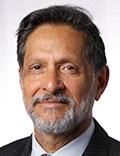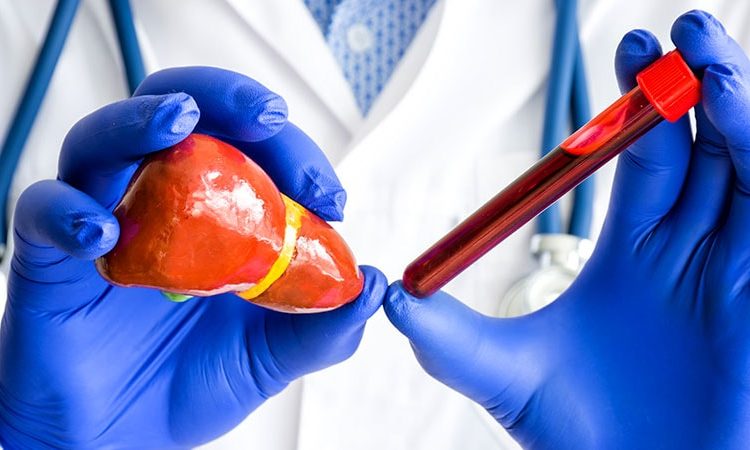
Dr Arun Sanyal
Novel biomarker tests have met or exceeded the performance of common lab tests for diagnosing nonalcoholic steatohepatitis (NASH, now known as metabolic dysfunction-associated steatohepatitis or MASH), laying the groundwork for noninvasive alternatives to liver biopsy, new research suggests.
The blood-based tests could expand diagnostic options at healthcare facilities and facilitate enrollment in NASH clinical trials, which now require a biopsy for inclusion.
“The current study meets a key milestone for qualification of the biomarker panels studied for identification of at-risk NASH,” Arun Sanyal, MD, of the Stravitz-Sanyal Institute for Liver Disease and Metabolic Health at Virginia Commonwealth University, Richmond, told Medscape Medical News.
“It sets the stage for further validation of these outcomes,” he said. “These data will inform development of full qualification plans for these biomarker panels that will be submitted to the US Food and Drug Administration [FDA]. Once these are accepted by the FDA, the final steps toward qualification can be initiated.”
The study, published online September 7 in Nature Medicine, was conducted as part of the Foundation for the National Institutes of Health – Biomarkers Consortium’s Noninvasive Biomarkers of Metabolic Liver Disease (FNIH-NIMBLE), a multistakeholder project to support regulatory approval of NASH-related biomarkers.
Multiple Biomarkers Move Forward
The investigators evaluated the diagnostic performance of five blood-based panels in an observational cohort derived from the NASH Clinical Research Network study, which included 4094 participants; 2479 individuals were excluded from the current study because of age, lack of samples, or lack of evaluable liver biopsies.
The remaining 1073 patients (mean age, 52.5 years; 62% women) represented the full spectrum of nonalcoholic fatty liver disease (NAFLD, now known as metabolic dysfunction-associated steatotic liver disease or MASLD). In total, 225 individuals had NAFLD, 835 had NASH, and 13 had cirrhosis with an indeterminate NAFLD phenotype.
Those without fibrosis were younger and had mainly fatty liver, not steatohepatitis. They also had a lower NAFLD activity score compared to those with stage 2 or higher fibrosis.
The study population for one of the five tests, FibroMeter VCTE, was a smaller subset (n = 396) of the larger population, with baseline features similar to the larger cohort.
The biomarker panels were intended to diagnose at-risk NASH (NIS4), presence of NASH (OWLiver), or fibrosis stages > 2, > 3, or 4 (enhanced liver fibrosis [ELF] test, PROC3, and FibroMeter VCTE). At-risk NASH was defined by the presence of NASH, high histologic activity, and fibrosis stage ≥ 2.
The performance metric was an area under the receiver operating characteristic curve (AUROC) ≥ 0.7 and superiority over alanine aminotransferase (ALT) for disease activity and the FIB-4 test for fibrosis severity.
Multiple biomarkers met the required metrics. For example, NIS4 had an AUROC of 0.81 for at-risk NASH. AUROCs for the ELF test (for clinically significant fibrosis, ≥ stage 2), PROC3 (advanced fibrosis, ≥ stage 3), and FibroMeter VCTE (cirrhosis, stage 4) were all ≥ 0.8.
For all fibrosis endpoints, ELF and FibroMeter VCTE also outperformed FIB-4.
“The current study was a first step to determine if the biomarker panels not only identified the relevant phenotypes based on their intended use but also if they were superior to some commonly used clinical laboratory tools, such as ALT and FIB-4,” the authors write. “These will serve as criteria, to be finalized with feedback from the FDA, to move the panels with the most promising performance metrics to the final qualification steps.”
“Individual developers of specific biomarker panels will need to determine their strategy; that is, have separate rule-in and rule-out cutoffs or a single optimized cutoff as they [formulate] the full qualification plans,” Sanyal noted. “Also, it may be necessary to validate these cutoffs and performance in independent cohorts reflecting the populations where these are planned to be used.”
“We hope that by 2025, the first wave of biomarkers will have enough data to support approval for diagnostic purposes and the data for prognostic biomarkers will follow within 1-2 years after that,” Sanyal added.
Are Practice Changes Ahead?
“Findings from this study and subsequent planned studies have the potential to redefine our approach to MASH and fibrosis diagnosis and staging, both in clinical practice and as part of clinical trials for the multiple new therapeutics being evaluated for MASLD/MASH,” Tatyana Kushner, MD, gastroenterologist/hepatologist and associate professor of medicine in the Division of Liver Diseases at the Icahn School of Medicine at Mount Sinai in New York City, told Medscape Medical News.
Kushner noted that the study population “may not represent the diverse population affected by MASH in the United States, or even the clinical trial population.” The cohort was predominantly White, with relatively low representation from people of Hispanic ethnicity, who are known to have a higher prevalence of MASH.
“Furthermore, the study population was specifically curated to have representative numbers across liver disease/fibrosis stages, and this may have biased the results,” she added.
In addition, other MASH-related biomarkers were developed after the current study started, including the FAST, Agile, and ADAPT scores, she said. “After validation of the biomarkers in this study, it will also be important to see how this newer wave of biomarkers performs.”
“If subsequent efforts validate the current findings, and there is buy-in from all of the stakeholders, including the FDA, NIH, industry, and academic leaders, this can truly lead to practice-changing approaches to the clinical management and study of MASLD/MASH,” Kushner concluded.
The study was partially funded by the National Institute of Diabetes and Digestive and Kidney Diseases and a grant from the National Center for Advancing Translational Sciences. The NIMBLE project is sponsored by the FNIH and is a public–private partnership supported by multiple entities, including AbbVie, Amgen, AstraZeneca, Boehringer Ingelheim, Bristol Myers Squibb, Echosens, GE Healthcare, Genentech, Gilead Sciences, Intercept Pharmaceuticals, Novo Nordisk, Pfizer, Regeneron Pharmaceuticals, and Takeda Development Center Americas. Support was also provided by the Global Liver Institute and FDA. Sanyal has disclosed financial relationships with multiple companies. He recused himself from the analysis and interpretation of NIS4. Kushner has declared being an advisor for Gilead, AbbVie, Eiger, and Bausch, and receiving research support from Gilead. None are MASH/NASH-related.
Nat Med. Published online September 7, 2023. Full text
Follow Marilynn Larkin on X: @MarilynnL
For more news, follow Medscape on Facebook, X (formerly known as Twitter), Instagram, and YouTube
Source: Read Full Article
